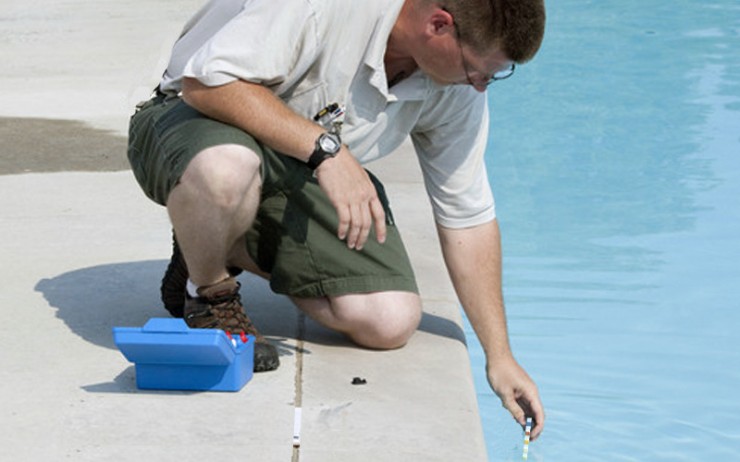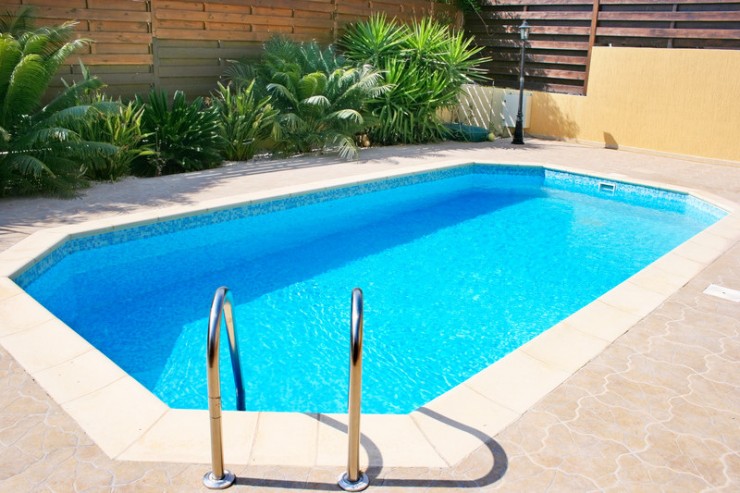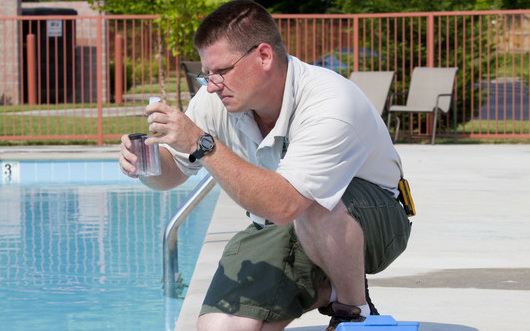As a pool owner, you know that high pH levels are bad news. But in your haste to reduce pH levels back to normal, you added too much pH reducer.
Unfortunately, it is possible to have too much of a good thing- in this case, too much sodium bisulfate or muriatic acid, aka pH Down, pH Reducer.
So what should you do if you add too much pH Reducer to your pool?

If you’ve added too much pH reducer, adding baking soda, soda ash, or borates to the pool will increase the pH of the water and fix the problem. The exact amount to use depends on the pool water’s starting pH and total alkalinity.
What Is pH Reducer?
So you added too much pH reducer. Before I give you the fix for this, let’s just check we’re on the same page. What do I mean by pH Reducer?
PH reducers are substances used to lower water’s pH level. They also go by names like:
- pH Decreaser
- pH Down
- pH Lower
- pH Minus
All these names can be seen on containers of common pH-reducing chemicals like sodium bisulfate or muriatic acid / hydrochloric acid.
Here’s a quick chemistry refresher. PH, which determines whether something is basic or acidic, has a scale that ranges from 0 to 14. Ideally, your pool’s pH should be between 7.4 and 7.6, which is the neutral range.
Despite your best efforts, many things can knock your pH levels out of the desired range: dirt, debris, and rain. If you’ve got a saltwater system, its pH levels naturally rise constantly. This volatility is why you’ll want to test your pool’s pH levels routinely.
Sodium bisulfate, also known as dry acid, is the main ingredient in most commercial pH decreasers, like pH minus or pH down. You can also use muriatic acid (hydrochloric acid), but since it’s highly corrosive, you’ll want to take extra precautions, like wearing safety gear.
Regardless of which pH reducer you go with, you’ll want to follow instructions to the letter. However, mistakes happen.
Let’s say you add 24 oz of pH to your water, only to find out this is the recommended dose per 100,000 gallons. You’ve got a 1000-gallon above-ground pool! What should you do now that you’ve added too much pH Reducer?
Next Steps After Too Much pH Reducer Added to Pool
If too much pH reducer has been added to your pool, it can make the water too acidic. Simply put, acidic water is corrosive and does bad things for your health, pool, and wallet. Examples include:
- Cloudy pool water
- Dry, itchy skin
- Stinging eyes and nasal passages
- Corroded metal components like ladders, light fixtures, and railings
- Etching and deterioration of concrete, stone, grout, and tiling
- Algae buildup due to reduced amounts of working chlorine
If you think you’ve gone overboard with the pH down, take the following steps
Check the pH Level to Confirm
You can check the pH of your pool water with a reliable pool test kit. Inaccurate test kits are one reason why pools get out of balance. Ideally, the pH level should be between 7.4 and 7.6. You’ve added too much pH reducer if it’s below this range.
3 Ways to Fix Too Much pH Reducer

1. Add Baking Soda
If the test kit gives you bad news, add baking soda to the water to raise the pH level. Baking soda is a natural alkaline substance that will help neutralize the acidity in the pool water. Depending on the alkalinity low, you’ll need to add 1.5 lbs to 10 lbs to the water.
So how much do you add? The general guideline is that for every 10,000 gallons of water, you’ll want to use 1.5 lbs of baking soda to raise the alkalinity of the water by around 10 ppm (parts per million). Add three to four lbs of baking soda if your pool is larger or the pH tested below 7.2.
Once you’ve measured the dose, spread it in arcs across the water’s surface so it doesn’t all hit one spot. (Tip: Don’t do this on a windy day- you’ll get more baking soda on you than in the water.)
As it happens, baking soda is also a pretty good (not to mention eco-friendly) household cleaner. This 12-pack of 1-lb boxes is under $15, and you can keep your home and pool water in ideal shape.
Wait and See
Wait four to six hours for the baking soda to dissolve in the water. You can help it disperse more evenly by turning on the pool’s circulation system. After at least four hours (but no more than 24), retest your pool’s pH and alkalinity levels.
If you get a reading of 7.2 to 7.8, you can go swimming. However, if the pH is below 7.2 and the alkalinity below 110 ppm, repeat the steps above until you get better readings.
2. Add Soda Ash
If you’ve added way too much pH reducer or pH down, then soda ash is your friend. Soda ash is good for increasing the pH in large steps without increasing the alkalinity of the water too much. It’s also good because not much is required.
Use about 6 ounces of soda ash per 10,000 gallons of pool water. Never add more than 1 lb of soda at the one time. Or you may get cloudy water.
3. Add Borax
Borax adds Borates to your pool and will increase the pH level without increasing the alkalinity. Plus, adding borates helps to keep the pH level stabilized.
You’ll need to use a pool chemical calculator to determine the amount of Borax to add, as the amount changes and depends on the starting pH and Total Alkalinity. But try adding 1-2 lbs, then test the water a few hours later. Add more if needed.
Call a Pro if Necessary

If your pool’s pH level is extremely low, or you’re uncomfortable tackling the problem alone, contact a professional for help. Your first call should be to the company that installed your pool, but if you bought the property with the pool already installed, hit Google for some direction or ask neighbors who they use. The experts can advise you on how to restore your pool’s pH balance.

